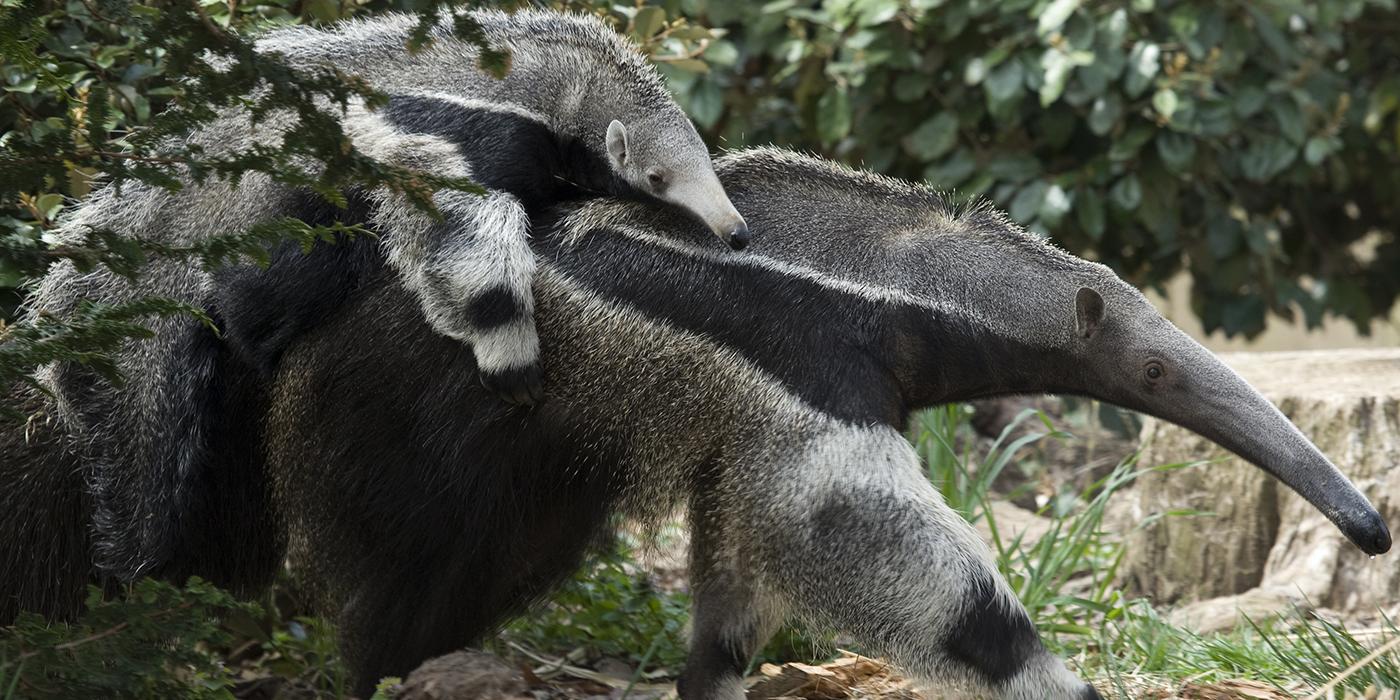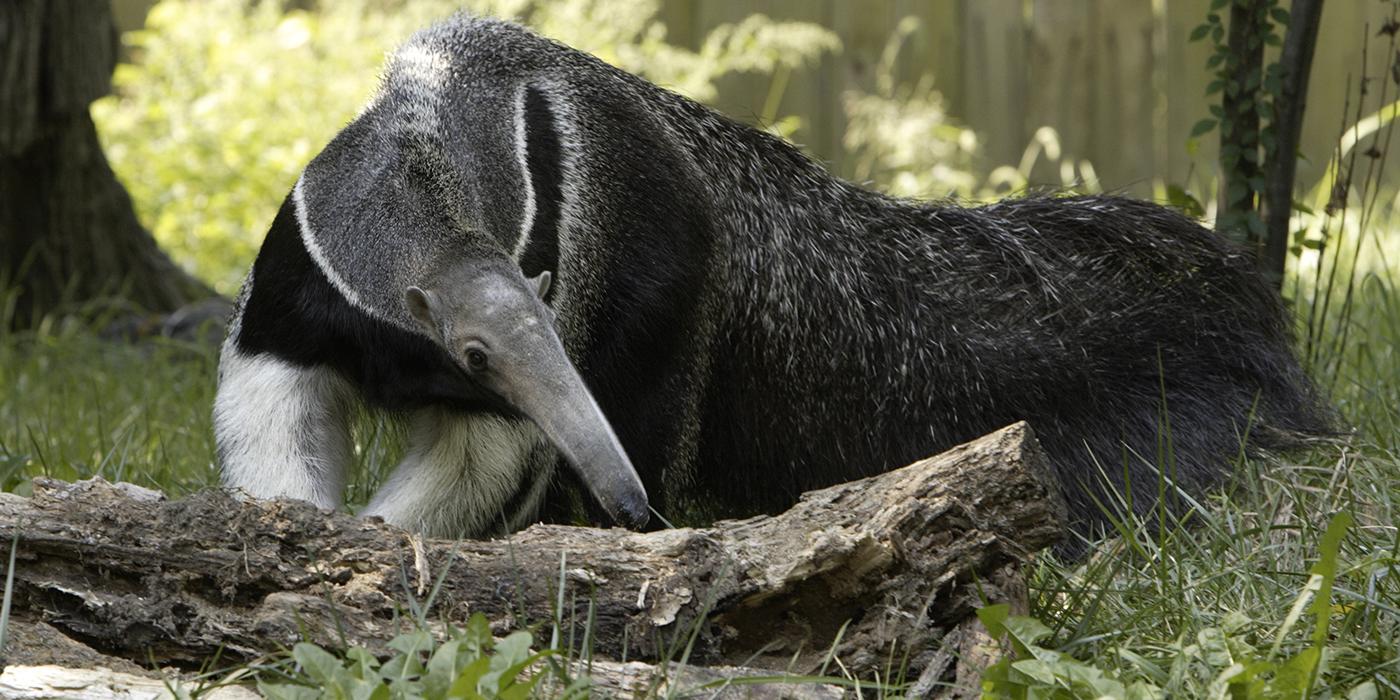Physical Description
Giant anteaters have a long, distinctive snout with a 2-foot-long tongue and no teeth. They may have diminished senses of hearing and sight, but they have a highly developed sense of smell.
These anteaters are distinctively patterned in various shades of brown with wide, black stripes that run from their upper front legs toward their spine. Their front legs are white, and they have a bushy tail. They have no undercoats to provide warmth; instead they have bristly, short hair on their shoulders and longer hair on their legs and tail, which resembles the texture of a horse's mane.
Giant anteaters protect their sharp front claws by tucking them into their palms and walking on their front knuckles. Their back feet and claws are more similar to bears (they only knuckle walk with their front feet). They walk in a slow, shuffling gait but when necessary can gallop at over 30 miles per hour (48 kilometers per hour). They can also climb and swim.
Size
The largest of the four anteater species, giant anteaters reach 6-8 feet (1.8-2.4 meters) in length, including both nose and tail. They weigh between 60 and 100 pounds (27 and 45 kilograms). However, it is nearly impossible to differentiate the adult male from the female using external anatomy alone.
Native Habitat
Giant anteaters are found throughout Central and South America except for Guatemala, Uruguay and El Salvador, where they are considered to be extinct. They live in wetlands, grasslands and tropical forests.
Lifespan
Lifespan in the wild is unknown. However, they can live up to 26 years in human care.
Communication
Giant anteaters will avoid threats if possible. If they need to defend themselves, they will rear up, steadying themselves with their large tails, and use their powerful claws. Adult giant anteaters are rarely vocal. If the young do vocalize, it is a high-pitched, shrill grunt.
Food/Eating Habits
Research has found that giant anteaters can identify the particular species of ant or termite by smell before they rip apart the prey's nest. When feeding, sticky saliva coats the tongue. The 2-foot-long tongue is attached to the sternum and can flick in and out up to 150 times per minute.
Anteaters feed almost exclusively on ants and termites, whose nests they rip open with their powerful forelimbs and claws, and then ingest with their sticky tongue. They only consume about 140 insects from each mound during a single feeding. They rarely drink, but instead receive their water from the foods they eat or possibly moisture left on plants after rain.
Sleep Habits
Giant anteater lifestyles appear to depend on the human population density around them. The more populated the area, the more likely the anteaters will be nocturnal; in less populated areas, anteaters are diurnal.
Social Structure
Giant anteaters are typically solitary, except during the mating season or when a mother is caring for her young. They do not make permanent nests or resting spots and likely wander throughout their ranges. Their ranges are about 1 square mile (1.61 square kilometers) for adult males and about 1.5 square miles (2.4 square kilometers) for adult females.
Reproduction and Development
Giant anteaters reach sexual maturity at 3-4 years of age. Gestation lasts about 180 days (six months). They give birth to a single young and suckle the offspring from a pair of mammary glands located on the chest.
After birth, the young anteater climbs onto the mother's back where it stays for up to a year. As it matures, it becomes independent. A young anteater usually nurses for six months and leaves its mother by age 2.
Conservation Efforts
The species is widespread geographically, but there have been many recorded population extirpations, especially in Central America and the southern parts of its range. More research must be done to estimate the total population loss across its range.
Habitat loss in combination with giant anteaters' dietary specificity, low reproductive rates and large body size are significant factors in its decline.
Help this Species
- Practice ecotourism by being an advocate for the environment when you’re on vacation. During your travels, support, visit or volunteer with organizations that protect wildlife. Shop smart too! Avoid buying products made from animals, which could support poaching and the illegal wildlife trade.
- Share the story of this animal with others. Simply raising awareness about this species can contribute to its overall protection.
- Are you a student? Did you love what you learned about this animal? Make it the topic of your next school project, or start a conservation club at your school. You'll learn even more and share the importance of saving species with classmates and teachers, too.




